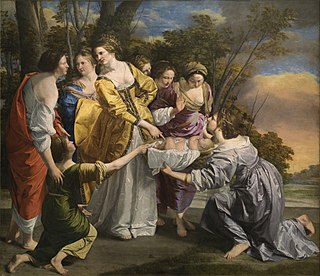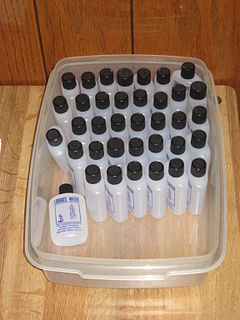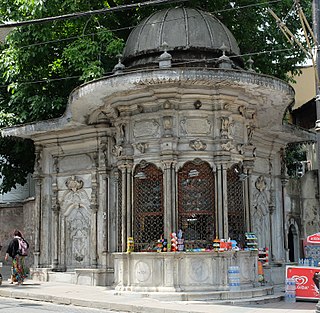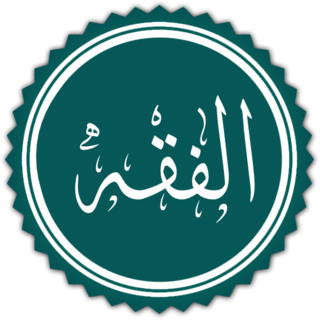 W
WWater is considered a purifier in most religions.
Apas is the Avestan language term for "the waters", which, in its innumerable aggregate states, is represented by the Apas, the hypostases of the waters.
 W
WIn Christianity, ablution is a prescribed washing of part or all of the body or possessions, such as clothing or ceremonial objects, with the intent of purification or dedication. In Christianity, both baptism and footwashing are forms of ablution. Prior to praying the canonical hours at seven fixed prayer times, Oriental Orthodox Christians wash their hands and face. In liturgical churches, ablution can refer to purifying fingers or vessels related to the Eucharist. In the New Testament, washing also occurs in reference to rites of Judaism part of the action of a healing by Jesus, the preparation of a body for burial, the washing of nets by fishermen, a person's personal washing of the face to appear in public, the cleansing of an injured person's wounds, Pontius Pilate's washing of his hands as a symbolic claim of innocence and foot washing, now partly a symbolic rite within the Church. According to the Gospel of Matthew, Pontius Pilate declared himself innocent of the blood of Jesus by washing his hands. This act of Pilate may not, however, have been borrowed from the custom of the Jews. The same practice was common among the Greeks and Romans.
 W
WAbraham's Well is a historical water well in Beersheba, Israel, associated with the biblical narrative of Abraham. Its structure houses the archaeology museum of Beersheba.
 W
WAffusion is a method of baptism where water is poured on the head of the person being baptized. The word "affusion" comes from the Latin affusio, meaning "to pour on". Affusion is one of four methods of baptism used by Christians, which also include total submersion baptism, partial immersion baptism, and aspersion or sprinkling.
 W
WA chōzubachi (手水鉢), or water bowl, is a vessel used to rinse the hands in Japanese temples, shrines and gardens. Usually made of stone, it plays an important role in the tea ceremony. Guests use it to wash their hands before entering the tea room, a practice originally adapted from the custom of rinsing one’s mouth and cleansing one’s body in the chōzuya before entering the sacred precincts of a Shinto shrine or a Buddhist temple.
 W
WChōzu-ya or temizu-ya is a Shinto water ablution pavilion for a ceremonial purification rite known as temizu or chōzu . The pavillion contains a large water-filled basin called a chōzubachi .
 W
WA cosmic ocean or celestial river is a mythological motif found in the mythology of many cultures and civilizations, representing the world or cosmos as enveloped by primordial waters.
 W
WThe Crossing of the Red Sea forms an episode in the biblical narrative of The Exodus.
 W
WThe Finding of Moses, sometimes called Moses in the Bullrushes, Moses Saved from the Waters, or other variants, is the story in chapter 2 of the Book of Exodus in the Hebrew Bible of the finding in the River Nile of Moses as a baby by the daughter of Pharaoh. The story became a common subject in art, especially from the Renaissance onwards.
 W
WJewish law and custom prescribe ritual hand washing in a number of situations. This practice is generally known by the Hebrew term נטילת ידיים, which literally means taking up of the hands.
 W
WHoly water is water that has been blessed by a member of the clergy or a religious figure. The use for cleansing prior to a baptism and spiritual cleansing is common in several religions, from Christianity to Sikhism. The use of holy water as a sacramental for protection against evil is common among Lutherans, Anglicans, Roman Catholics, and Eastern Christians.
 W
WJesus walking on the water, or on the sea, is depicted as one of the miracles of Jesus recounted in the New Testament. There are accounts of this event in three Gospels—Matthew, Mark, and John—but it is not included in the Gospel of Luke. This story, following the miracle of the feeding of the five thousand, tells how Jesus sent the disciples by ship back to the "other side" of the Sea of Galilee while he remained behind, alone, to pray. Night fell and the sea arose as the ship became caught in a wind storm. After rowing against the wind for most of the night, the disciples saw Jesus walking on the water. They were frightened, thinking that they were seeing a spirit, but when Jesus told them not to be afraid, they were reassured. After Jesus entered the ship, the wind ceased, and they arrived at land.
 W
WJubb Yussef, also known as "Joseph's Well" in English, is an archaeological site in Ramat Korazim in the Galilee, Israel. It is believed by Muslims to be the site of the pit in Dothan, into which the Biblical figure Joseph was cast into by his brothers and later sold to a caravan of Midianites on its way to Egypt.
 W
WLourdes water is water which flows from a spring in the Grotto of Massabielle in the Sanctuary of Our Lady of Lourdes, France. The location of the spring was described to Bernadette Soubirous by an apparition of Our Lady of Lourdes on 25 February 1858. Since that time, many thousands of pilgrims to Lourdes have followed the instruction of the Blessed Virgin Mary to "drink at the spring and bathe in it". Lourdes water is considered non-liturgical holy water.
 W
WThe transformation of water into wine at the Marriage at Cana or Wedding at Cana is the first miracle attributed to Jesus in the Gospel of John. In the Gospel account, Jesus Christ, his mother and his disciples are invited to a wedding. When his mother notices that the wine has run out, Jesus delivers a sign of his divinity by turning water into wine at her request.
 W
WMatthew 3:11 is the eleventh verse of the third chapter of the Gospel of Matthew in the New Testament. The verse occurs in the section relating the preachings of John the Baptist. In this verse he predicts that he will be followed by someone much greater than himself. The main theme of this verse is that John will soon be supplanted by a much greater figure and that John's water baptism is just a preparation for the much greater baptism by fire and spirit that will occur under the second coming of the Christian messiah Jesus, an original Christian concept that, according to Jewish scholars, lacks any fundament in the Hebrew scripture.
 W
WMaundy, or the Washing of the Feet, or Pedelavium, is a religious rite observed by various Christian denominations. The Latin word mandatum is the first word sung at the ceremony of the washing of the feet, "Mandatum novum do vobis ut diligatis invicem sicut dilexi vos", from the text of John 13:34 in the Vulgate. This is also seen as referring to the commandment of Christ that believers should emulate his loving humility in the washing of the feet. The term mandatum, therefore, was applied to the rite of foot-washing on the Thursday preceding Easter Sunday, called Maundy Thursday.
 W
WMikveh or mikvah is a bath used for the purpose of ritual immersion in Judaism to achieve ritual purity.
 W
WPactolus, now named Sart Çayı, is a river near the Aegean coast of Turkey. The river rises from Mount Tmolus, flows through the ruins of the ancient city of Sardis, and empties into the Gediz River, the ancient Hermus. The Pactolus once contained electrum that was the basis of the economy of the ancient state of Lydia which used the naturally occurring alloy of gold and silver to forge the first coins under Alyattes of Lydia.
 W
WThe Pharaoh's daughter in the story of the finding of Moses in the biblical Book of Exodus is an important, albeit minor, figure in Abrahamic religions. Though some variations of her story exist, the general consensus among Jews, Christians, and Muslims is that she is the adoptive mother of the prophet Moses. Muslims identify her with Asiya, the Great Royal Wife of the pharaoh. In either version, she saved Moses from certain death from both the Nile river and from the Pharaoh. As she ensured the well-being of Moses throughout his early life, she played an essential role in lifting the Hebrew slaves out of bondage in Egypt, their journey to the Promised Land, and the establishment of the Ten Commandments.
 W
WThe Pool of Bethesda is a pool in Jerusalem known from the New Testament account of Jesus miraculously healing a paralysed man, from the fifth chapter of the Gospel of John, where it is described as being near the Sheep Gate, surrounded by five covered colonnades or porticoes. It is now associated with the site of a pool in the current Muslim Quarter of the city, near the gate now called the Lions' Gate or St. Stephen's Gate and the Church of St. Anne, that was excavated in the late 19th century.
 W
WThe term Pool of Siloam refers to a number of rock-cut pools on the southern slope of the Wadi Hilweh, considered by some archaeologists to be the original site of Jerusalem, located outside the walls of the Old City to the southeast. The pools were fed by the waters of the Gihon Spring, carried there by the Siloam Tunnel.
 W
WQadamgah or Chasht-Khor is an Achaemenid rock-cut monument at the southeastern part of the Kuh-e Rahmat mountain in Fars Province of Iran, about 40 km south of Persepolis. It consists of three platforms with rear walls and staircases, and features cavities on the back wall and a now-dry spring and pond at the bottom. Its function has been a matter of debate, with latest research pointing to a religious function related to the holy element Water.
 W
WIn Judaism, ritual washing, or ablution, takes two main forms. Tevilah (טְבִילָה) is a full body immersion in a mikveh, and netilat yadayim is the washing of the hands with a cup.
 W
WThe Samaritan woman at the well is a figure from the Gospel of John, in John 4:4–26. In Eastern Orthodox and Eastern Catholic traditions, she is venerated as a saint with the name Photine (Φωτεινή), meaning "luminous [one]".
 W
WA sebil or sabil is a small kiosk in the Islamic architectural tradition where water is freely dispensed to members of the public by an attendant behind a grilled window. The term is sometimes also used to refer to simple unmanned fountains with a tap for drinking water, though other names often exist for such fountains.
 W
WShadirvan is a type of fountain that is usually built in the courtyard or near the entrance of mosques, caravanserais, khanqahs and madrasas, with the main purpose of providing water for drinking or ritual ablutions to several people at the same time, but also as decorative visual or sound element.
 W
WTashlikh is a customary Jewish atonement ritual performed during the High Holy Days.
 W
WThe Tigris is the eastern of the two great rivers that define Mesopotamia, the other being the Euphrates. The river flows south from the mountains of the Armenian Highlands through the Syrian and Arabian Deserts, and empties into the Persian Gulf.
 W
WIn Japan, a tsukubai (蹲踞) is a washbasin provided at the entrance to a holy place for visitors to purify themselves by the ritual washing of hands and rinsing of the mouth. This type of ritual cleansing is the custom for guests attending a tea ceremony or visiting the grounds of a Buddhist temple. The name originates from the verb tsukubau meaning "to crouch" or "to bow down", an act of humility. Guests attending a tea ceremony crouch and wash their hands in a tsukubai set in the tea garden (roji) before entering the tearoom.
 W
WWashing and anointing is a temple ordinance practiced by The Church of Jesus Christ of Latter-day Saints and Mormon fundamentalists as part of the faith's endowment ceremony. It is a sacred ordinance for adults, similar to chrismation, usually performed at least a year after baptism. The ordinance is performed by the authority of the Melchizedek priesthood by an officiator of the same gender as the participant.
 W
WIn Christianity the term "water of Life" is used in the context of living water, specific references appearing in the Book of Revelation, as well as the Gospel of John. In these references, the term Water of Life refers to the Holy Spirit.
 W
WThe Waters of Mormon, in the 18th chapter of the Book of Mosiah, is a body of water where about two hundred Nephites were baptized.
 W
WWuḍūʾ is the Islamic procedure for cleansing parts of the body, a type of ritual purification, or ablution. The 4 Fardh (Mandatory) acts of Wudu consists of washing the face, arms, then wiping the head and finally washing the feet with water.